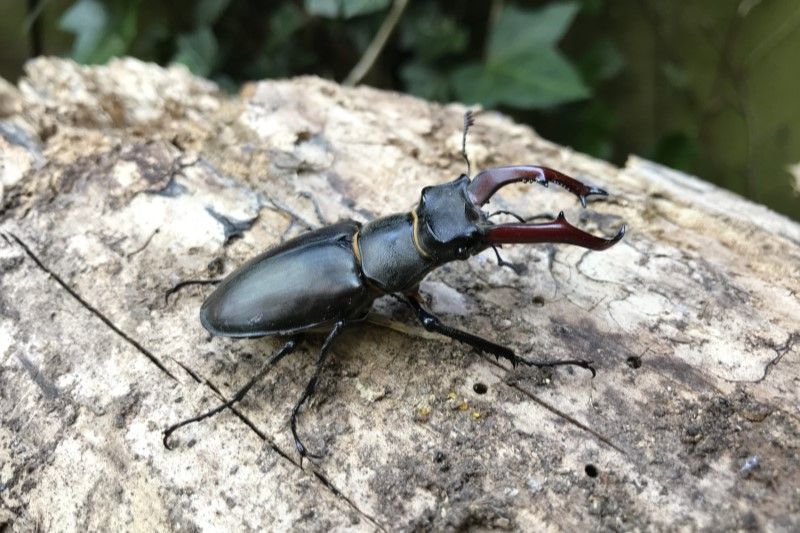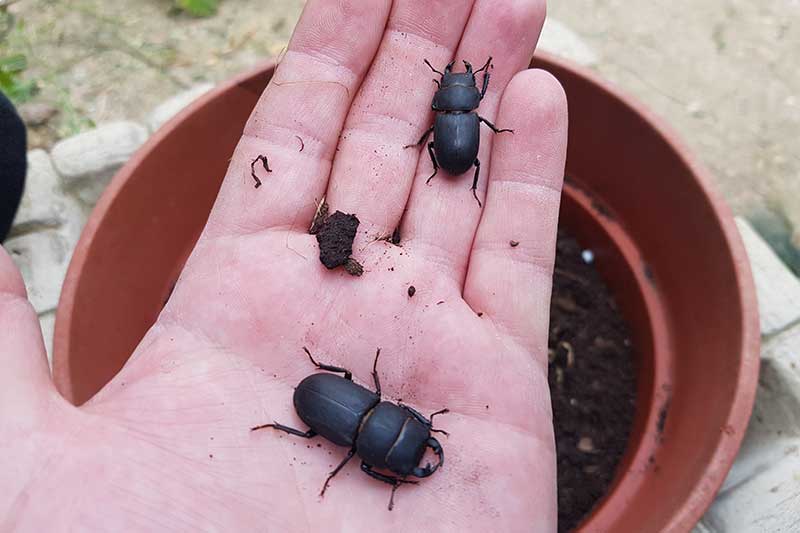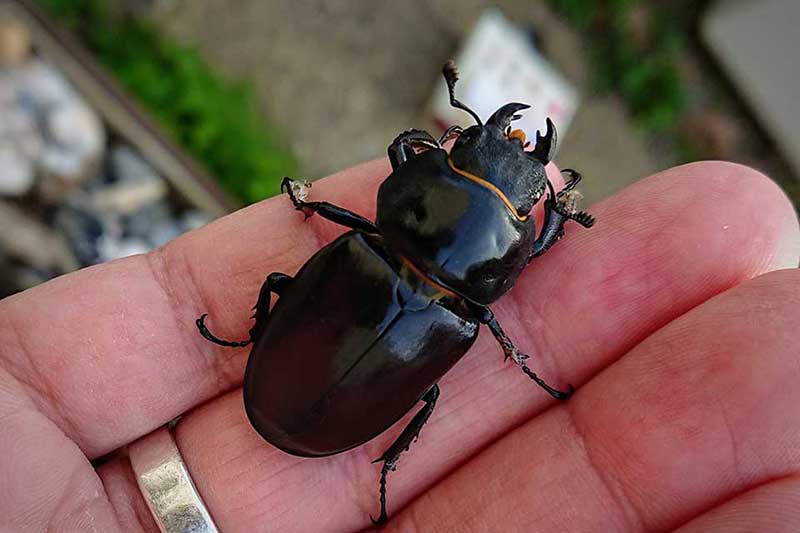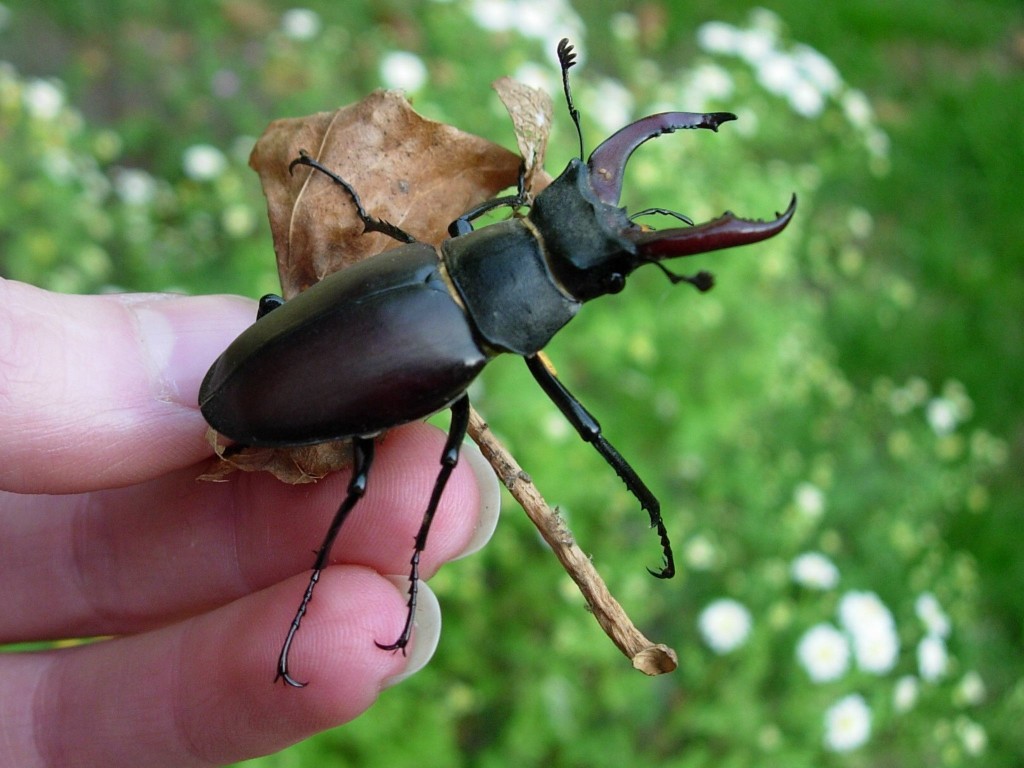If you own a woodland or you visit one regularly, please keep a particular eye out for stag beetles on warm sunny evenings from the end of May to the end of July. You can tell us about any sightings via our Great Stag Hunt survey.
Stag beetles and woodland habitats
Stag beetles are one of our most recognisable and best-loved beetles. With their distinctive antler-like jaws and haphazard flight, stag beetles conjure up nostalgia of sultry summer evenings past. But despite their familiarity, stag beetles have undergone a huge decline and range contraction across their European range and have even gone extinct in two countries.
Stag beetles in the UK are usually found in urban and suburban areas in gardens, parks and cemeteries. Historically, as woodlands and wood pastures were replaced with more human-centric habitats such as farms and orchards, then eventually towns and cities with gardens, these places became the refuge for stag beetles. It seems this suited them due to the warmer microclimate and the availability of old trees as well as fence posts and sleepers.

Elsewhere in Europe, stag beetles occur mainly in woodlands. A recent study in Poland looking at forest type preference showed that stag beetles prefer oak stands aged over 80 years. 92% of stag beetle records were in forest stands (as opposed to roads, towns, woodland edge or cemeteries). Stag beetles are a thermophilus (warmth-loving) species preferring natural open stands, mainly oak forests and oak-hornbeam forests. They prefer areas with southern exposure and a warm microclimate.
Despite their large size and characteristic appearance, spotting a stag beetle is made more difficult because they have such a short adult season and are mainly active at dusk. But if you know where to look and the conditions are right (still, warm evenings), you may spot a male flying around trying to find a mate, or a female most likely walking along the ground.
So, are our stag beetles really confined to parks and gardens? Or is it because we are only looking for them in these areas? Are they still inhabiting the more open woodlands with sunny glades and plenty of dead wood? All questions we would like to answer.
That’s where you can help. If you own a woodland or you’re in one regularly surveying dormice, we’d like you to keep a particular eye for stag beetles on warm sunny evenings from the end of May to the end of July. And tell us about any sightings via our Great Stag Hunt survey.
Stag beetle ID
Stag beetles are most often confused with lesser stag beetles, their smaller cousin. The two main differences are:
- lesser stag beetles are quite small, around 2-3cm long whereas stag beetles are 5-8cm
- stag beetles are shiny and often have chestnut brown wing cases whereas lesser stag beetles are matt black all over.



How you can help stag beetles in woodlands
Stag beetles rely on dead and decaying wood for the majority of their life cycle. The larvae live underground and feed on decaying wood for several years. The best way to help stag beetles is by keeping dead trees, tree stumps and fallen wood in place in your woodland. You can also build log piles. They also need more open areas where the sun can warm the soil, so creating open, sunny glades and rides will benefit stag beetles as well as wild flowers and pollinators. Please go to stagbeetles.ptes.org for more information about stag beetles.
